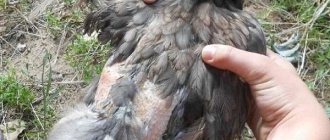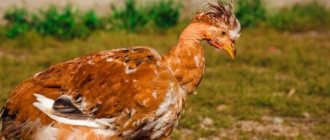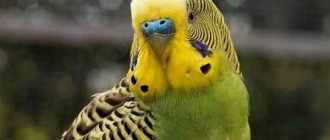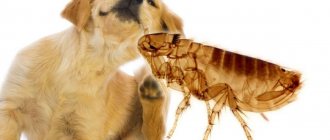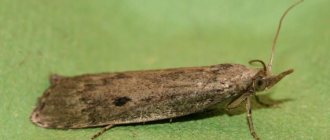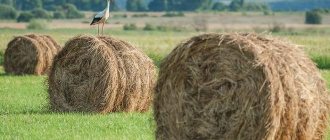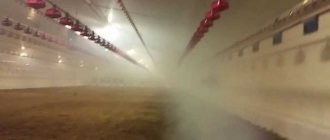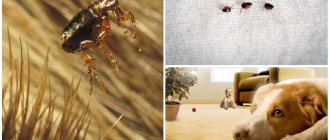Good afternoon, experienced and novice poultry farmers! Today we will show you a video and photo of what lice look like on chickens. Methods of control at home and prevention of lice infestation in chickens in our material.
Parasites, including ticks, fleas and lice, are not as dangerous as pathogenic microflora (bacteria and viruses). However, if treatment is delayed due to parasitic diseases? At best, productivity decreases. At worst, the entire bird population dies.
Therefore, if you suspect that birds are infected with parasites, you should immediately begin treatment. In severe cases, you cannot do without the help of a veterinary specialist.
Important! Parasites (and lice in chickens are no exception) are potential culprits of infestations and infections. They spread a deadly infection. For example, the causative agent of bird plague.
Lice on chickens photo
Biology of lice. Lice are parasitic insects up to 6 mm long.
Features of the external structure:
- Body color and shape – brown in color and flattened body.
- The presence of claws on the paws, with the help of which insects cling to the skin of the owner.
- The presence of mandibles on the head, the proboscis is an organ that absorbs blood.
- Similarities to related parasites that infect humans.
The first stage of lice development occurs in the eggs. The offspring inside the eggs develop within a week.
By the way, lice on chickens are better visible under a flashlight!
Individuals emerging from eggs begin to reproduce after 3-4 days of development. The maximum lifespan of an adult louse is 30 days.
Lice, unlike ticks and bedbugs, do not leave their host. All stages of development take place on the host’s skin. Without a bird, the bloodsucker survives for seven days at best, after which it dies.
After a louse bite, a compound appears in the chicken’s bloodstream, which causes severe itching and impaired blood clotting.
Methods for removing parasites
Today, there are many answers to the question of how to get rid of feather eaters in a chicken coop. Moreover, the variety of these methods involves both the use of traditional medications and very effective folk methods. You should choose a drug based on the fact that under normal conditions the life span of lice does not exceed 4 weeks, but their fertility allows up to 120 thousand individuals to be born during this period.
It is also important to take into account the short incubation period, and it is on the basis of these data that treatment is selected. A louse in a chicken coop, as already mentioned above, can be defeated both with the help of chemicals and through available folk methods.
How to spot lice on chickens?
Dense plumage makes visualization of parasites very difficult. Therefore, during preventive examinations, it is easier to identify lice under the wings. It’s good to look at the front of the head, neck and back of the head, and limbs.
Lice stick to areas with thin skin. It is clear that here it is easier for them to get to the bloodstream.
Advice! Get a headlamp. It will significantly simplify periodic inspections of the livestock.
Answers to popular questions
Inexperienced poultry keepers can be very confused when parasites appear in the area where the chickens are kept or on the birds themselves. Experienced veterinarians and farmers can tell you why lice appear and how to deal with them.
Where do lice come from?
The main reasons for the appearance of chicken lice:
- the coop room is too humid;
- litter is rarely removed from the chicken coop;
- chickens on dirty bedding get sick faster;
- the owners do not take good care of the chickens;
- the chicken coop is too small, cramped;
- the room where chickens are kept is never treated with disinfectants.
Sometimes lice appear even in clean and well-kept chicken coops. Sometimes they are brought there by foreign birds who want to profit from the feeder. Parasites from an infected bird spread to a healthy one, after which a dynamic process of reproduction in the feathers begins.
It is important to identify the pathological process at the initial stage, since advanced chicken lice is very difficult to treat.
Lice symptoms in chickens
External symptoms. Let's look at the signs characteristic of a bird affected by lice. The problematic chicken is constantly worried, trying to catch “free riders” with its beak in its plumage.
As a result, the picture is complemented by wounds and bald spots. The bird also has no appetite. Hence exhaustion and low productivity.
Other symptoms:
- Reddened and flaky skin in places.
- Baldness. This sign is the result of lice eating the plumage.
- Retarded growth and development. This sign is typical for young animals.
- Staying awake at night. Even one individual with no sleep serves as an alarm bell.
- Livestock waste.
This is what an unfortunate lousy chicken looks like...
Birds are most susceptible to parasite attacks after molting. Why? The fact is that lice love to feed even on fresh, soft fluff.
The photo shows a feather from a Chinese silken chicken eaten by chicken lice.
What are dangerous pests for poultry?
The parasitic infestation spreading among the inhabitants of the poultry house cannot be ignored. Lice are carriers of a number of dangerous diseases. Some researchers believe that it is these parasitic creatures that can provoke a flu epidemic in the household. To see what a feather eater looks like, watch this video:
In addition, many diseases that are fatal to young animals are also spread by these blood-sucking creatures. Typical symptoms of the presence of parasites in chickens include:
- nervous behavior;
- pecking at itchy places;
- scratching on the floor and walls;
- apathy;
- decreased appetite.
Lice pose a serious threat to households. The bites quickly exhaust the chicken. First, body weight decreases, and then egg production. Adult birds usually tolerate parasitic infestation more easily than young birds. Infected chicks die from exhaustion.
Infected chicks die from exhaustion
The feather eater does not pose any danger to humans. In rare cases, they can attack people, but even if these creatures get into the hair, this does not lead to infection. Lice of this species cannot constantly feed on human blood and lay eggs. To eliminate accidentally infested pests, it is enough to wash your head and body with regular shampoo and comb your hair.
A few words about the infection process
Factors contributing to lice infestation in poultry:
- The deplorable sanitary condition of the chicken coop.
- Very dense planting of chickens.
- Keeping affected and healthy birds together.
- Contact with wild birds and rodents.
- Microclimate parameters that do not correspond to standard values.
This list suggests that to prevent lice infestation of your poultry yard, you should plan ahead for a chicken coop whose design features comply with the recommendations. Also provide for walking, a schedule of sanitary and preventive measures. Consider protection from wild birds and rodents (we have already written about all this).
We will provide laying hens and broilers with dust ash baths with diatomaceous earth!
Rational feeding taking into account the age, productivity and physiological state of the bird will be useful. And also the use of premixes! Consider also equipping the poultry house with reliable forced ventilation for large flocks.
Traditional methods against mallophagosis
If a livestock infestation with beetles was detected at an early stage, you can try to do without special chemicals. Traditional methods of fighting insects are considered less effective, but they also have a certain effect.
To deal with the feather eater, you can first use vinegar.
Regular table vinegar is diluted with warm water in a ratio of 1:3. The easiest way to treat birds is with a spray bottle. Apply the solution as carefully as possible so that it does not get into the eyes and beak. For more information about the fight against beetles, watch this video:
You can cope with this parasitic infestation with a mixture of ammonia, benzene and kerosene. When preparing a mixture to combat the beetle, these components are taken in equal proportions.
The finished mixture is used to treat chicken feathers. After 15 - 20 minutes they are washed in warm soapy water.
Such treatment, as a rule, eliminates parasite eggs, but for preventive purposes it is repeated after 7–10 days.
Lousy chickens are treated several times
You can also cope with parasites using decoctions of some medicinal herbs.
A good effect can be achieved by using wild rosemary, tansy and chamomile.
To prepare a decoction, take approximately 1 kg of crushed plant of the selected type and pour 10 liters of boiling water. Keep the resulting mixture over high heat for at least 15 minutes. The cooled broth is used to spray infected birds.
Are lice in chickens transmitted to people?
What are the dangers of chicken lice to humans? Our blood is not digested by chicken lice. At the same time, there are cases when bird parasites end up on human skin. This problem can be solved with a regular shower and shampoo.
However, we should not think that chicken lice are harmless creatures in relation to us. Medicine knows of cases where chicken parasites cause human illness with encephalitis, brucellosis, salmonellosis and other dangerous pathologies. By the way, the causative agents of these diseases can also be contained in eggs and poultry meat affected by lice.
What products should not be used?
Some remedies help against chicken lice, but harm the bird itself. Others do not cause harm to birds, but accumulate in muscle fibers and eggs, after which, when they enter the body of people, they cause intoxication.
To remove chicken lice, the use of endrin, chloradane, heptachlor, benzene, and hexachloride is prohibited.
When using approved chemicals, it is important to observe their dosage, since exceeding it can also affect the quality of chicken meat.
How to fight lice in chickens?
Tricks to get rid of parasites.
The strategy for combating parasites can be divided into two stages:
I – processing of chickens.
II – disinfection of a chicken coop freed from poultry.
The first step is to stock up on antiparasitic insecticides.
Important! Do not allow drugs to enter the gastrointestinal tract, the organs of vision or the nasal cavity of the bird. Most commercial products contain compounds with toxic effects.
In case of large-scale damage, experienced poultry farmers rely on fast-acting chemicals (Butox, etc.). What if there are several birds to be processed? This means it’s better to use Bars drops and Clean House spray. An aqueous solution of Executioner will also help. PS: not all effective preparations for lice in chickens are listed.
Let's figure out how drops are used. First, the locations for applying the product are determined. What if chicken lice have settled on all parts of the bird’s body? Then the drops are applied to the areas with the largest number of parasites.
When single specimens of insects are observed, applying drops to the withers of the chicken will be sufficient. The drops are applied between the spread feathers on the skin and are not rubbed in, as they spread on their own.
Drip preparations are good because they destroy parasites regardless of their stage of development. True, they provide protection to the bird for a maximum of 30 days. Other important points. Drops against lice in chickens should not be used on young animals or sick adults.
Let's move on to sprays. First, the bird's plumage is cleaned. Various types of contamination negatively affect the effectiveness of drugs. The spray is used over the entire surface of the body and in the direction of the feathers.
The features of using aqueous solutions are the same as in the case of sprays.
Prevention
To prevent the appearance of parasites, it is necessary to take the arrangement of the chicken coop seriously. It should be spacious enough and have a fence that prevents sparrows and rats from getting in there. The chicken coop and aviary require regular cleaning.
Proper nutrition of birds also plays an important role. The food must contain all the necessary microelements, vitamins and minerals. When purchasing new individuals, you should definitely make sure that they are not infested with lice or carry out preventive treatment.
Treating the chicken coop for lice
What about the chicken coop? The first thing to do is clean the poultry house! Bedding material, residues and feed reserves are removed. Surfaces are washed. Only after this are insecticides used.
Advice! Don’t want to be poisoned by store-bought drugs or get chemical burns? Then get special equipment for disinfection. You can wear thick clothes. You will need a mask for your face and gloves for your hands.
After disinfection, the poultry house is left alone for a couple of hours. After this time, fresh bedding material is laid down. The second treatment is carried out after 2 weeks.
During a repeat event, steam can be used. To do this, you need a special unit, which is available to the relevant services.
Preparing your chicken coop to combat chicken lice
If pediculosis is detected in chickens, then you need to spend a lot of time to first clean the chicken coop and kill all the parasites. First of all, poultry farmers should thoroughly clean out chicken droppings and litter residues.
Feeders, drinkers and other items used by birds also need to be thoroughly washed. When washing, you should use disinfectants, and it is also advisable to pour boiling water over them to remove nits.
If there is a pen next to the chicken coop, then it would be correct to remove the top layer of soil on it and take it away from the chicken coop. And sand and ash can be poured into its original place.
